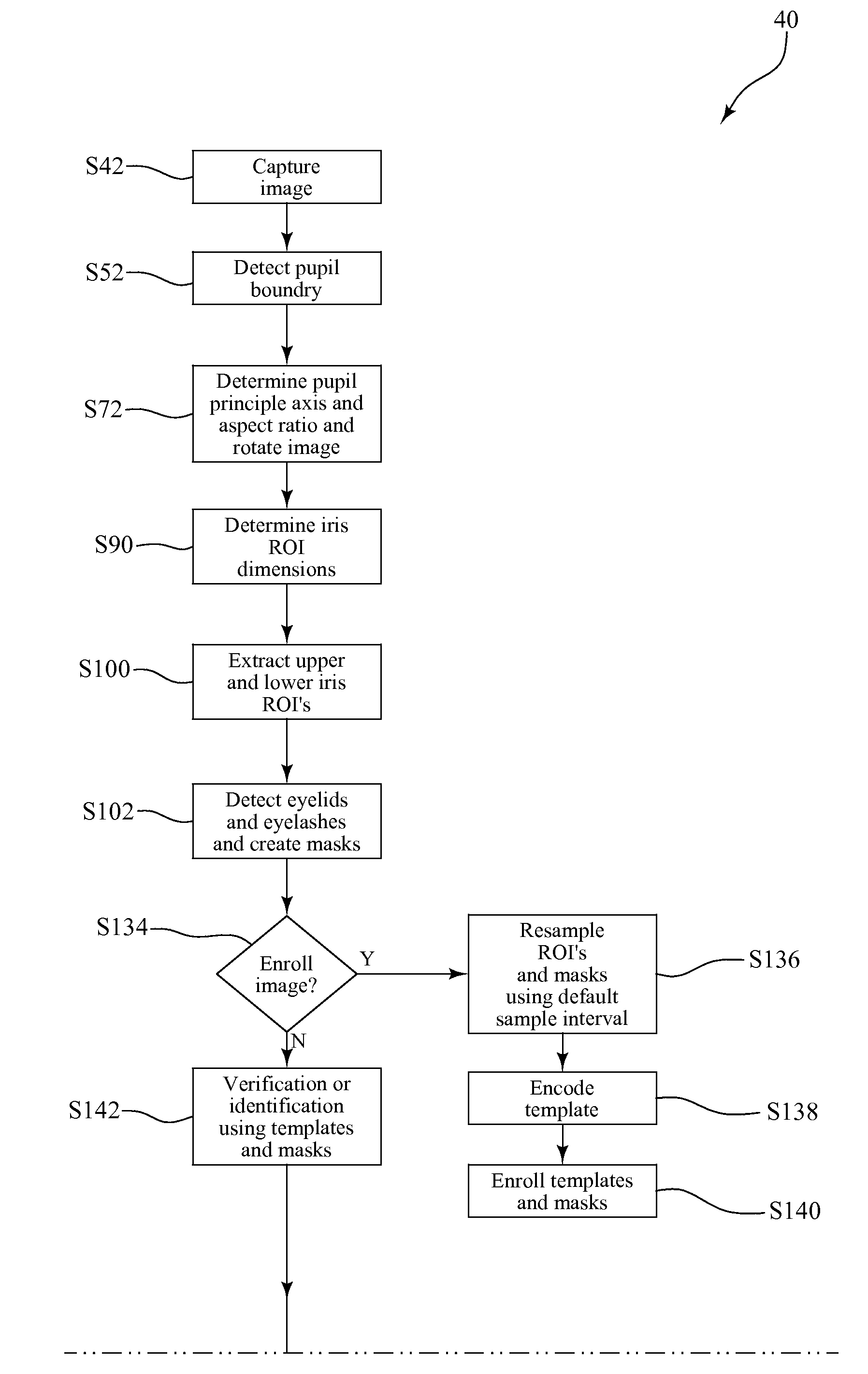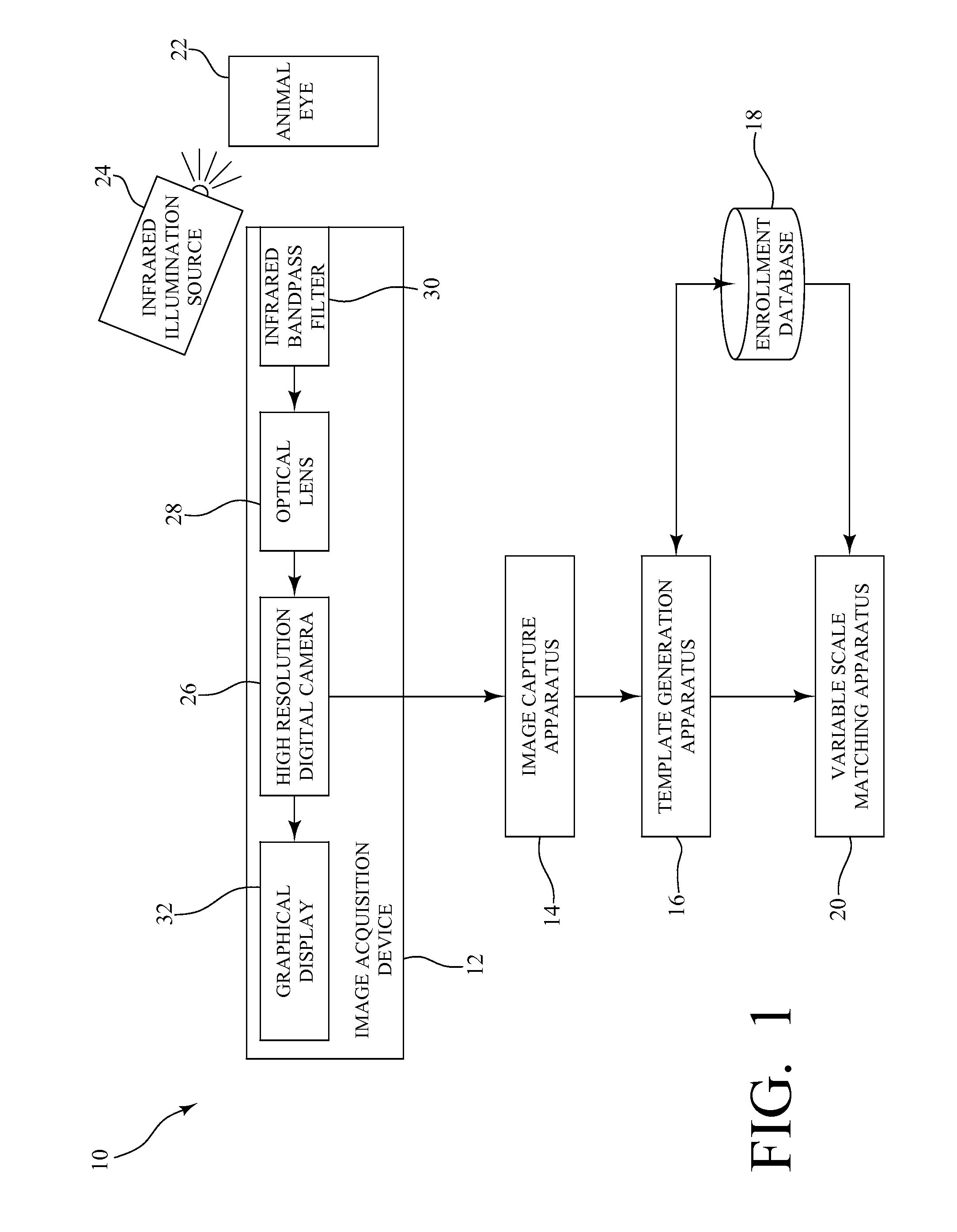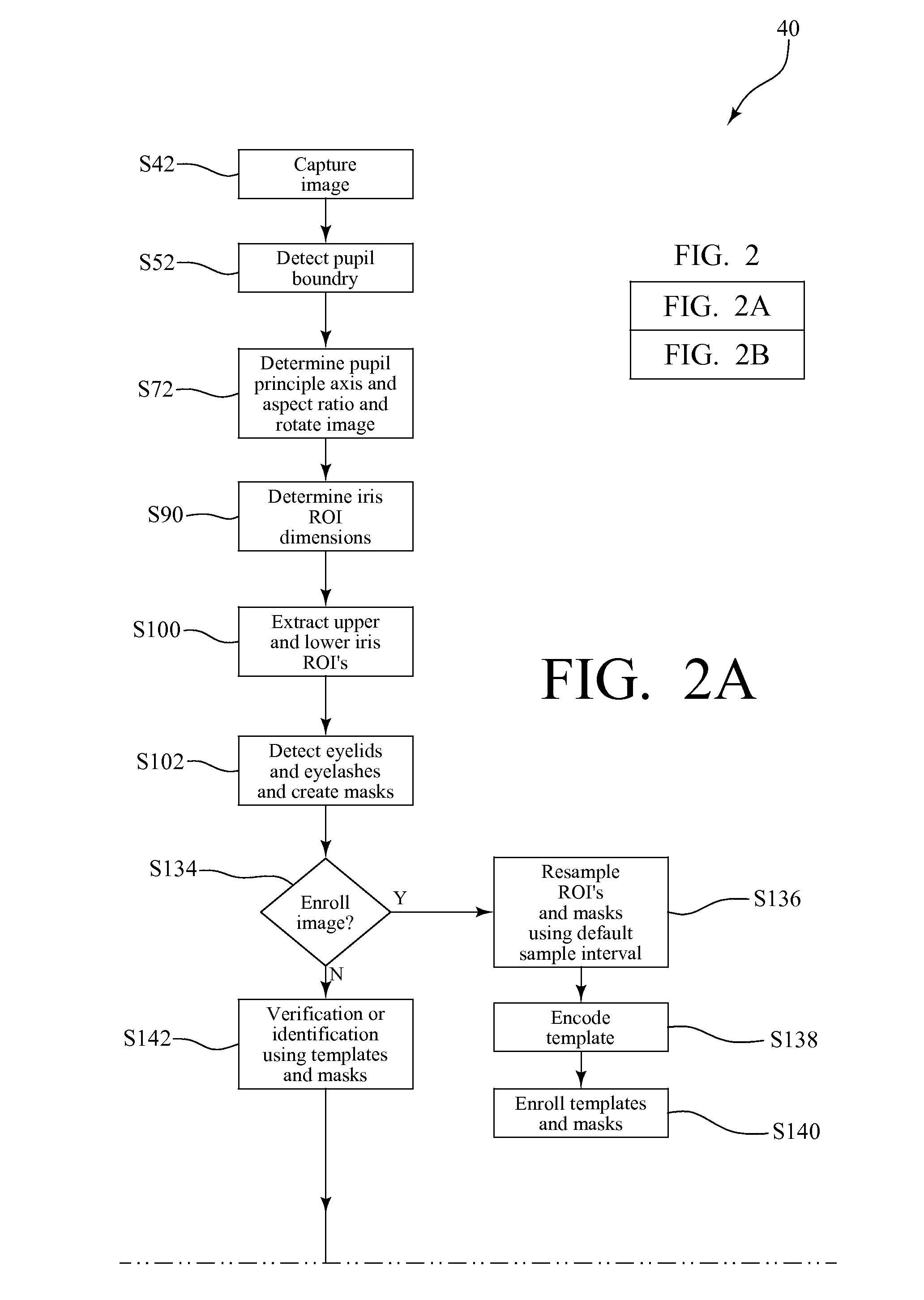System and method for animal identification using iris images
- Summary
- Abstract
- Description
- Claims
- Application Information
AI Technical Summary
Benefits of technology
Problems solved by technology
Method used
Image
Examples
Embodiment Construction
[0053]FIG. 1 shows an exemplary system 10 for animal identification using iris images, including an image acquisition device 12, an image capture apparatus 14, a template generation apparatus 16, an enrollment database 18, and a variable-scale matching apparatus 20. An image of an animal eye 22 is captured using the image acquisition device 12. The animal eye 22 is preferably illuminated by an infrared illumination source 24. The infrared illumination source 24 may be integral with the image acquisition device 12, or may be independent.
[0054]The image acquisition device 12 consists of a high resolution digital camera 26, an optical lens 28, an infrared bandpass filter 30, and a graphical display 32. The high resolution digital camera 26 and the infrared bandpass filter 30 operate in conjunction with the infrared illumination source 24 in the near-infrared to infrared spectrum with light having wavelengths extending from about 720 to 850 nanometers. The graphic display 32 is used to ...
PUM
 Login to View More
Login to View More Abstract
Description
Claims
Application Information
 Login to View More
Login to View More - R&D
- Intellectual Property
- Life Sciences
- Materials
- Tech Scout
- Unparalleled Data Quality
- Higher Quality Content
- 60% Fewer Hallucinations
Browse by: Latest US Patents, China's latest patents, Technical Efficacy Thesaurus, Application Domain, Technology Topic, Popular Technical Reports.
© 2025 PatSnap. All rights reserved.Legal|Privacy policy|Modern Slavery Act Transparency Statement|Sitemap|About US| Contact US: help@patsnap.com



